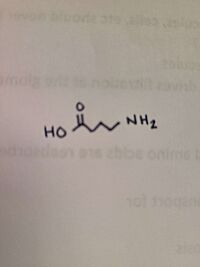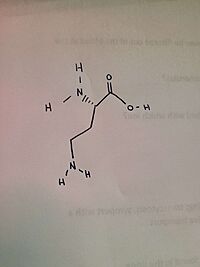This is a default text for your page '. Click above on edit this page' to modify. Be careful with the < and > signs.
You may include any references to papers as in: the use of JSmol in Proteopedia [1] or to the article describing Jmol [2] to the rescue.
Function of your protein
The specific function of (hOAT) is that of an enzyme. It can be found in humans, as well as mice and pigs. It helps transfer L-ornithine’s δ-amino group to α-ketoglutarate (α-KG). [3] There is a lack of understanding in regards to hOAT's catalytic mechanism, even though it is a key component of human metabolism. As noted in the article, hOAT operates on a "Bi-Bi, Ping-Pong" kinetic mechanism resulting in the first part of the reaction undergoing a conversion of PLP -> PMP and L-Orn -> L-GSA. Then PMP's amino group is catalyzed by hOAT creating an α-KG.
Biological relevance and broader implications
hOAT is important because it is heavily involved in the urea cycle. In mammals, it dictates a large portion of the development of neonates. The research on this protein is relevant to science as a whole because it could directly impact cancer research and lead to the creation of cancer management in humans. There has been overexpression of hOAT within Hepatocellular carcinoma (HCC) cells, therefore there is reason to believe that the overexpression of hOAT is an indication of chronic liver diseases and cancer of the liver. The inhibitors include: y-aminobutyric acid (GABA), 5-aminovaleric acid (AVA), and L-2,4-diaminobutyric acid (DABA). The highest affinity of binding with hOAT is GABA. It also has a higher percentage of return in the reverse reaction. The more that hOAT is understood and researched, the more inactivators can be designed to combat the overexpression of hOAT that is found in conjunction to HCC.
Important amino acids
The ligand of hOAT is Pyridoxal-5'-Phosphate . The role of the catalytic amino acids in an enzyme is to bind to a substrate, changing the structure, causing bonds to break and new bonds to be formed. When there is a difficult reaction, the triad of amino acids works in tandem to facilitate the reaction. A - was found on AVA, but not on GABA.
Structural highlights


